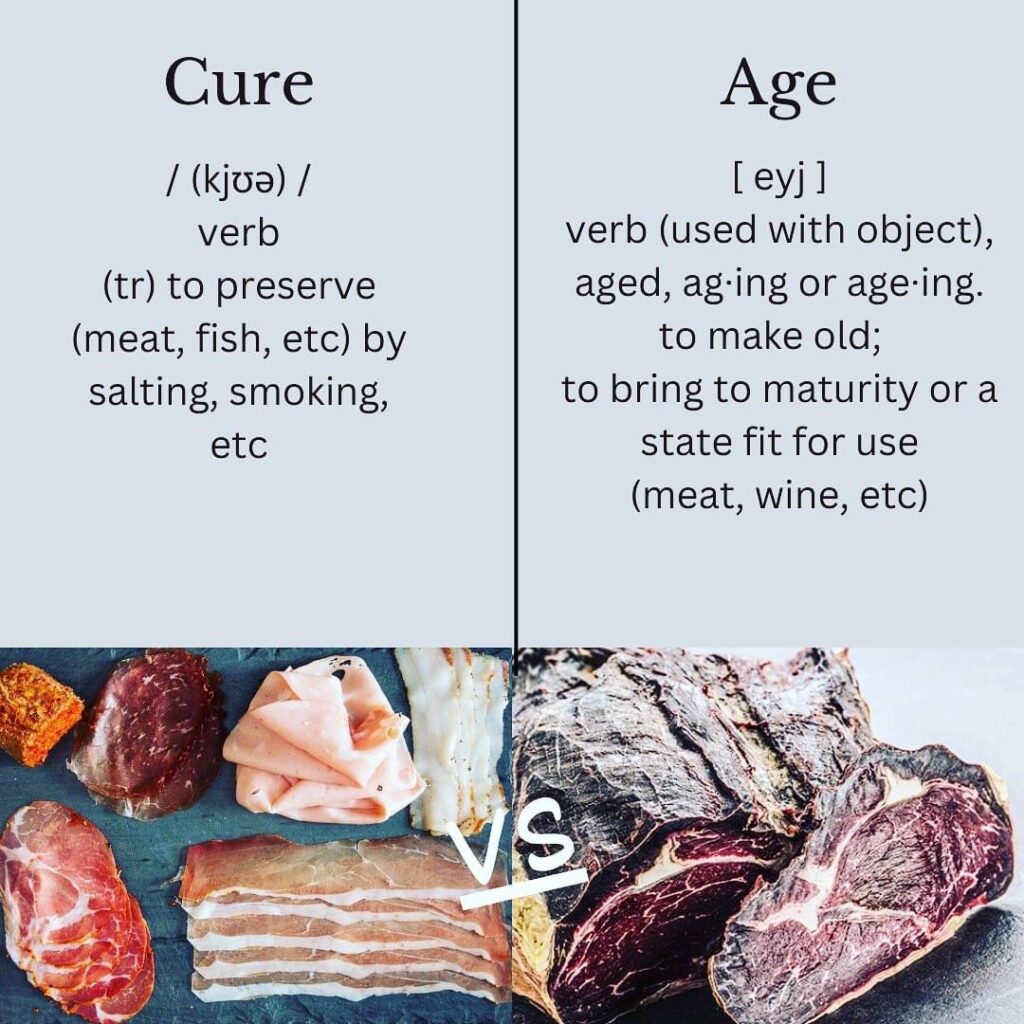
Cured meats are preserved by the addition of salt, with the aim of drawing moisture out of the food by the process of osmosis. Because curing increases the solute concentration in the food and hence decreases its water potential, the food becomes inhospitable for the microbe growth that causes food spoilage. Curing can be traced back to antiquity, and was the primary method of preserving meat and fish until the late 19th century. Dehydration was the earliest form of food curing. Many curing processes also involve smoking, spicing, cooking, or the addition of combinations of sugar, nitrate, and nitrite. The most common cured meats includes bacon, ham, salami, corned beef, kielbasa, blood sausage, andouille, pepperoni, pastrami, bologna, and prosciutto.
Aging is a process of preparing meat for consumption by letting the meat rest in temperatures just above freezing in order to break down the connective tissue within the meat. The two methods of aging meat are wet and dry aging. It is also the same process that occurs in meat that is “hung” in refrigeration.
To simplify, curing is a form of preserving meat and aging is like reverse rigor mortis, a form of tenderizing.
I see a lot of folks using these terms interchangeably. I hope this helps!






